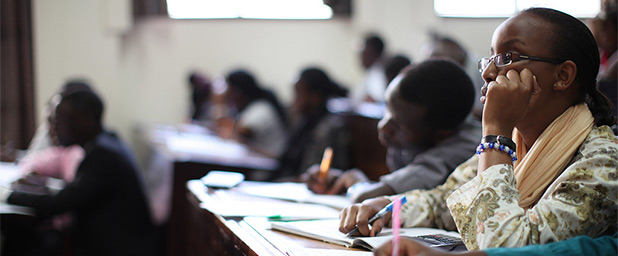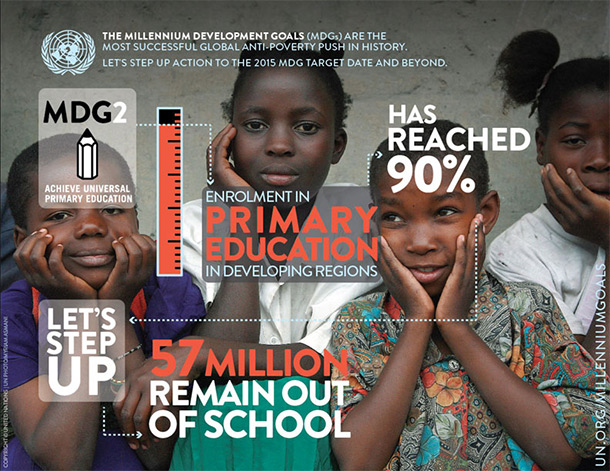
As part of a new blog series, we’ll be taking a look at the United Nations’ Millenium Development Goals (MDGs) and examine how Kiva loans contribute to addressing these targets.
This week, we’ll investigate the importance of education and the role it plays in gender empowerment. Why is education important and how does it really impact extreme poverty? How does Kiva challenge inequality in academic opportunity, and what can lenders do to help foster this development?
Unlike other Millenium Development Goals, the target to provide everyone with a primary education was set to be enforced by 2005 -- 10 years earlier than other MDGs. This is largely due to the consensus that equal access to education is regarded as the foundation of all the other development goals, and a catalyst to reducing poverty and promoting gender equality.
According to UNICEF, an international institution dedicated to the welfare of youth, girls who receive primary education create a “multiplier effect;” they’re more likely to marry at a later age, find employment, vote, gain access to credit, and decrease their chances of contracting a fatal illness; ultimately providing women around the world with a voice. For many, literacy also opens doors to career paths and also gives them the ability to participate both politically and economically within their community.
Without schools, many children would also not have access to vaccines, disease education, and nutrient supplementation. Furthermore, since school is a safe haven for many students, it shelters them from the risk of abuse and exploitation that they may face at home or in a work environment.
Our Field Partner CAMFED is a perfect example of an organization tackling this issue. Their focus is eradicating poverty in rural Africa by investing in education for girls and supporting the economic self-reliance and leadership of young women. In 2012 alone, Camfed improved the educational status of over 2 million children and youth through a network of 4,743 schools. Their comprehensive programs address the most vulnerable and marginalized members of a community, providing school feels, supplies, uniforms, and a support system to ensure their success continues after graduation.
Also consider Belghoria Janakalyan Samity (BJS) in India. This non-profit focuses on poverty alleviation through women’s empowerment and social services such as a school program for youth. One year ago, they launched an informal primary school in Laxminathpur for over 40 children between the ages of 3 and 10. Their books, stationery and uniforms were all fully funded by BJS, which also regularly disburses scholarships and awards books to other students.
By lending through these organizations and other Field Partners, the Kiva community has the opportunity to not only promote educational progress, but also help make the Millenium Development Goals for education and gender empowerment a reality.
Progress report

As of 2010, enrollment in primary education had reached 90 percent -- up from 82 percent in 1999. The gender gap also narrowed between from 90 female students for every 100 male students in 1999, to 95 for every 100 by 2011.
At the same time, 57 million children of primary school age are still out of school, and 123 million youth lack basic reading and writing skills (61% of them are young women). Which is all the more reason why it’s so important that lenders like you are empowering borrowers and supporting both educational loans and female entrepreneurs.
If you’re contemplating how you can make a difference this year, consider the impact that education had on your own life, and think about sharing that gift with another young person today.














